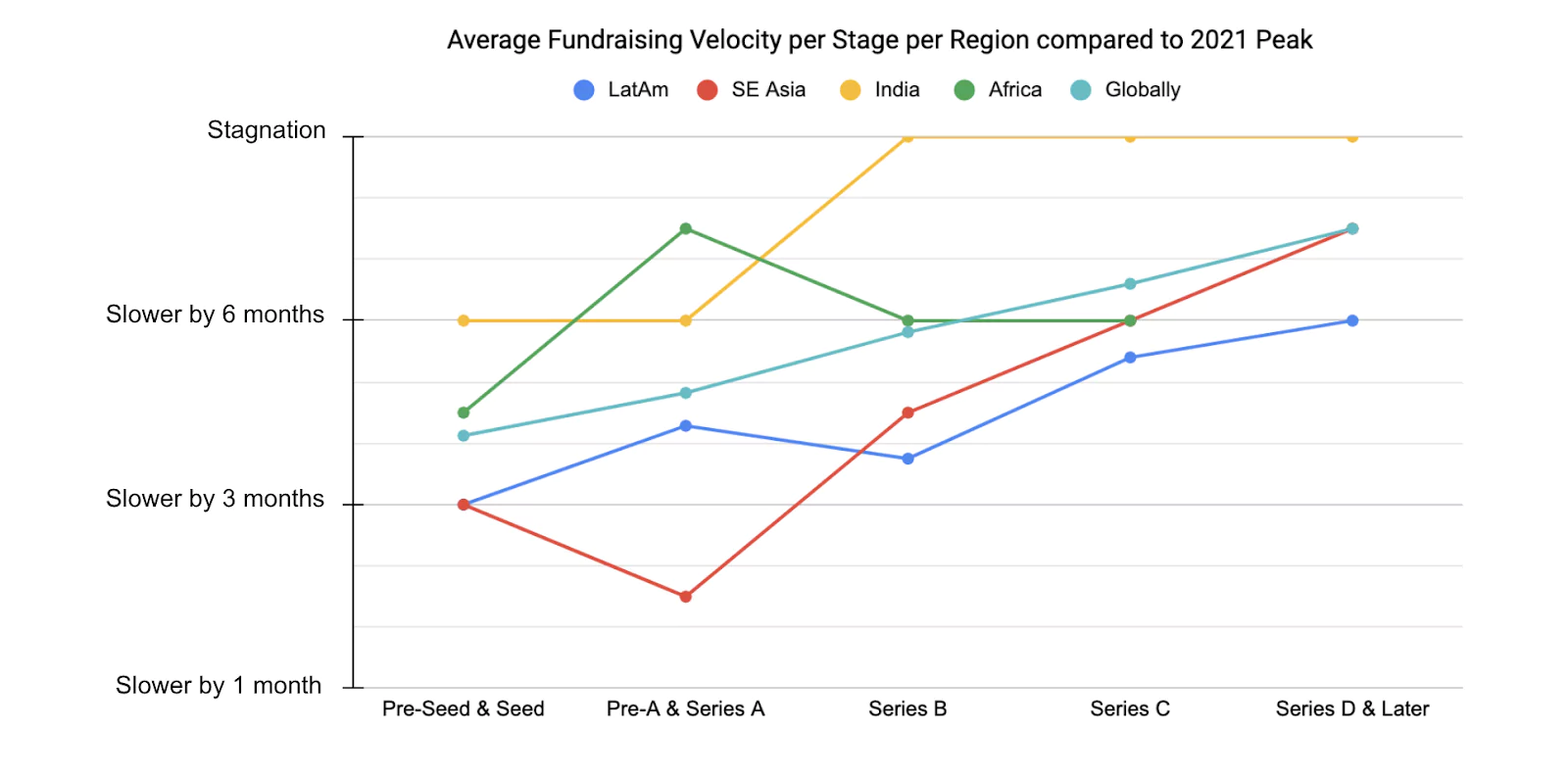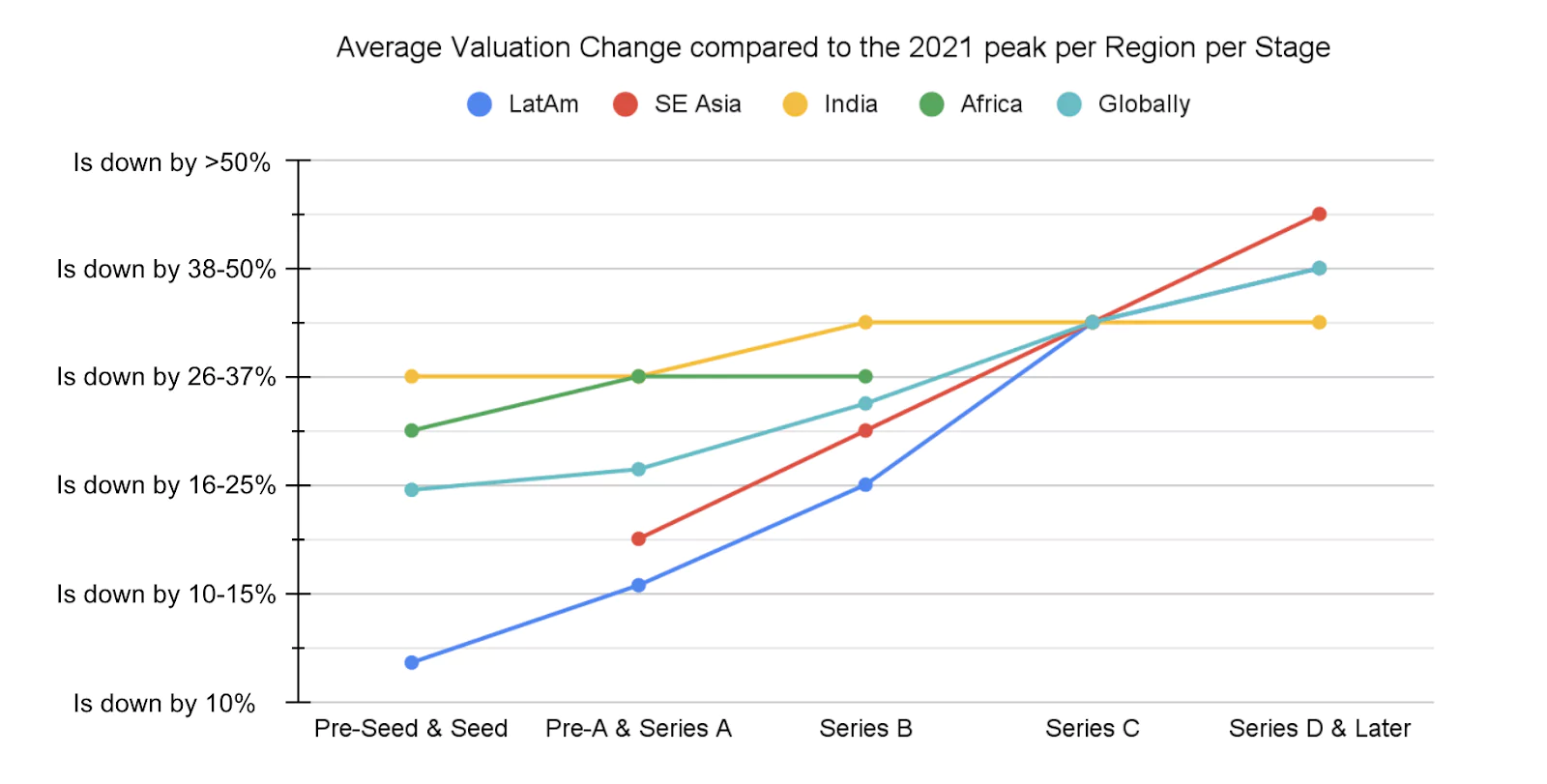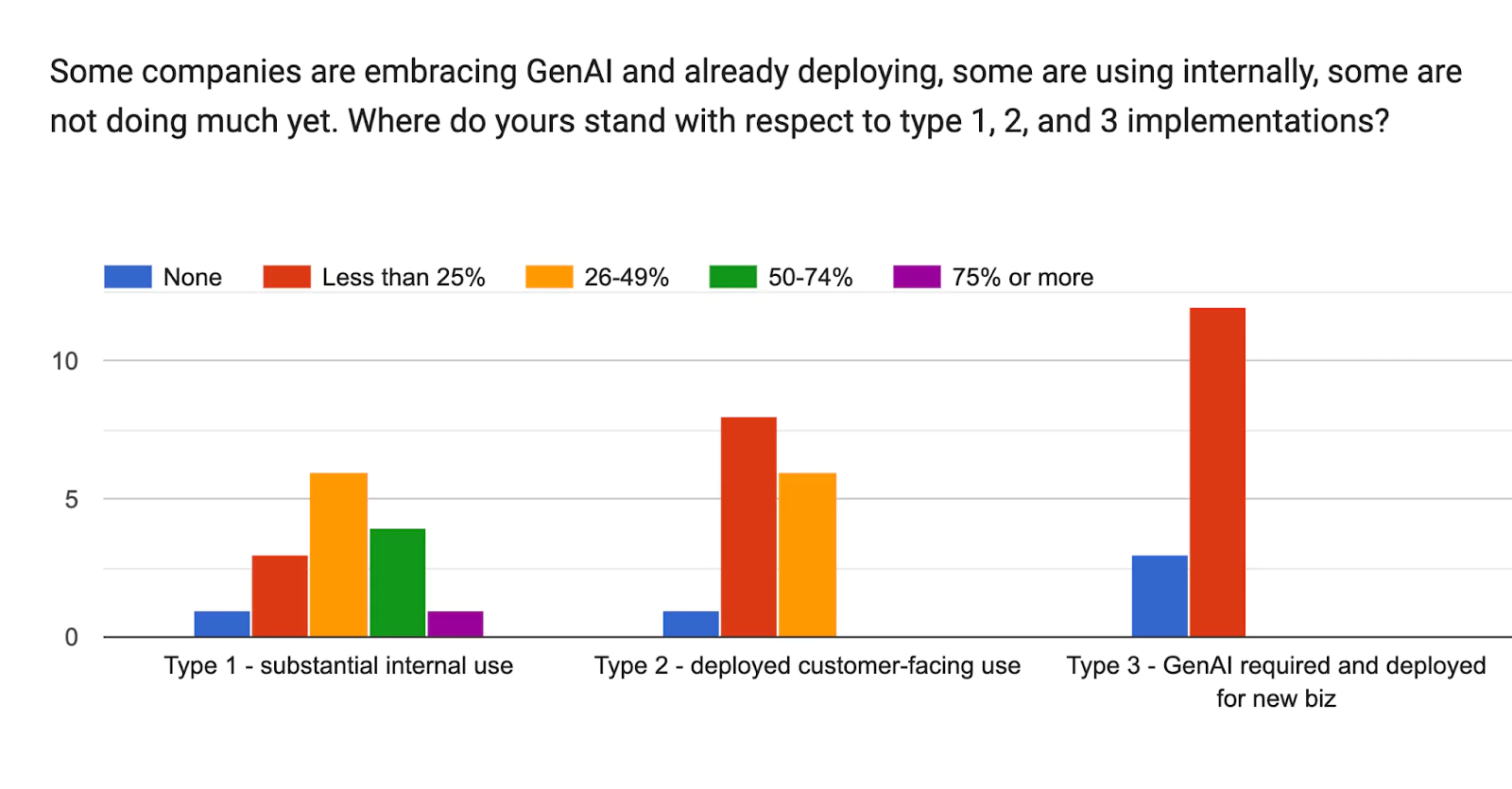If you’re the founder of an early-stage GenAI-first startup, yes, winter is over, and you’re in a hot market with sky-high valuations. For almost everyone else, a recent survey of our 18 investing partners from across the Global South, as well as our direct investing activities, indicates that the fundraising winter has persisted through the seasons and is still alive and chilly. The reasons are clear: two active wars; the US Fed stating that higher interest rates may continue into 2024; inflation starting to lower but expected to persist; and US government bond rates continuing to rise along with the growth of government debt. Despite the successful ARM IPO and enthusiasm for Stripe and some other upcoming IPOs, the broad-based headwinds for both public and private equities don’t appear to be abating anytime soon. Our previous LP insider mail, “Views from São Paulo, Jakarta…” provided first-hand accounts from my partners and me based on recent travel; this edition is focused at the macro level and also provides our annual network survey results in context.
Based on the continued fundraising winter conditions, earlier this year, we advised our portfolio companies to have cash runways through at least Q4 2024 based on what we saw then. We are now advising companies to extend their runways until at least Q4 2025. The following chart from our recent network survey shows the basis for this advice better than my best prose. Up and to the right is not good in this context…

Comparing to Current US VC Trends
Just after I wrote this update, Pitchbook provided some very helpful charts showing activity in US Venture Capital. I recommend taking a look here. You’ll see that our observations from the Global South are largely consistent with what their large dataset of US VC is indicating.
Getting our Portfolio to “Default Alive”
Becoming “default alive” = “getting to cash flow break-even (CFBE)” with current cash on hand AND being careful to maintain a reasonable cash operating balance as growth continues. For most companies, this means:
- further operating expense reductions now – mostly in headcount;
- focusing on high margin revenue and, conversely, forgoing lesser margin revenue;
- focusing on growing in core product(s)/market(s)
- decreasing larger new investments that don’t have very quick payback
- exploring additional lower cost customer acquisition channels;
- scrubbing accounts receivable outstanding to improve collections, and
- looking for quick wins on implementing GenAI to improve productivity.
In our recent survey, we were pleased to see that 2/3 of managers of early- to early-growth venture portfolios believe that the vast majority of their founders have reset expectations and are acting accordingly, establishing solid plans to achieve CFBE or to have an 18-24 month runway.
Growing into valuations
Faced with fundraising challenges and often with a healthy pile of cash in the bank, many founders are looking to “grow into” their 2021 valuations. This is a fine strategy as long as they can retain enough runway (probably via making some painful cuts), maintain healthy double-digit growth, and lead their team through the lean times. To understand how far companies needed to grow to get back to where they were 2 years ago, we asked our investing partners where they see current valuations vs. 2021 peak:
As you can see, there are regional variations, but nearly everyone sees only modest reductions in the early stages and increasingly substantial reductions in the later stages. For example, to “grow into” this reality, we see SaaS companies that raised at 20x revenue needing to more than double their revenue while maintaining margins and growth rate to get back to 2021 valuation based on a more typical revenue multiple of 5-8x.

Is this an overreaction?
Is this focus on valuation re-growth, CFBE, and “default alive” an overreaction? Maybe, but we think not. Who thought we would have a new war? The question is, should investors bet against this scenario? Seed-stage companies have more flexibility to grow without a path to profitability, but Series A and beyond funded companies will often struggle to raise growth capital without a clear path to profitability. As noted earlier, the exception is GenAI-first companies that are often getting VC investment despite their burn rate simply based on investors’ land grab behavior.
Companies that don’t aggressively apply GenAI will not attract investors or retain talent
Many months ago, we sounded the call to action with founders and helped them develop strategies to ensure they were not late for the GenAI train. More recently, we wrote about how capital and talent are rapidly migrating to companies that are making GenAI a high priority. Talent, especially in the startup world, is very mobile as people want to be part of the future opportunities being built. Using our Type 1, 2, and 3 GenAI framework, if companies aren’t already making progress on GenAI Type 1(productivity), have roadmaps for rapidly advancing Type 2 (improve existing products and deploy), and medium-term plans for Type 3 (build completely new products), investors will de-prioritize them in their pipeline.
We asked our investing partners about how their portfolio companies were doing in this regard. Not surprisingly, they said that uptake, even for GenAI productivity, is not as universal as we believe it should be across the Global South.

To raise more VC capital, startups must show strong growth
VC firms investing at Series A and later rounds universally look for 1-2 years of strong growth. Usually, revenue growth, but sometimes other growth, such as active users. Investors vary, but revenue growth usually needs to be a minimum of 75-100% per year to get attention.
Companies focused on CFBE operations can find it challenging to invest forward for growth, especially in direct customer acquisition. Companies need to focus on a shorter timeframe “payback” of the customer acquisition cost (CAC) AND more rapid growth in lifetime value (LTV) to pay for further CAC investment. This is, of course, more easily said than done; we have such conversations daily with founders, helping them find a balance between cost and growth.
Without strong growth and CFBE plans, capital raises are likely at punishing terms
As outlined in Craft Ventures’ podcast, companies that don’t fit well into the VC or PE sweet spot for investment will likely face very painful fundraising options, including down rounds, pay-to-play, cram downs, and other structured financing. These can wipe out founder equity and equity stakes for earlier investors.
Prepare for the worst, and EXECUTE to make progress in prep for funding Spring
In summary, the headwinds indicate the potential for an extended funding winter for venture-backed startups. We are coaching founders to focus on being Default Alive by getting to cash flow positive with current cash (with a reasonable buffer). We’re focusing on founders who can continue to build their business, albeit more slowly, with continuous smart small short-term investment bets, with a substantial focus on GenAI. By doing so, founders will be ready for a Spring warming of the investment climate when they can once again raise growth capital to speed growth and ultimately realize the potential of their business.
Happy last months of 2023! We’ll return to you in Jan/Feb with an outlook for 2024.
Will, Dave, Susana, and Surya
Managing Partners

